Guyanese parsad is a smooth, buttery dish made with parched flour, ghee, milk, sugar, and spices. It is typically made for Hindu celebrations and holidays.
Guyanese Parsad
Guyanese parsad is connected to all of my memories of my grandmother Evelyn. She was a Hindu and made sweets for every Hindu holiday and all of her poojahs or jhandis. I have fond memories of her preparing parsad on the fireside.
The parsad at poojahs (ceremonial worship) came in a brown paper bag that was always stained by the grease from the ghee. I have a very distinct memory of the contents of this greasy brown paper bag. There was parsad, half of a small banana, a piece of watermelon, sometimes a piece of ice apple (American apples) some pomegranate seeds, and other sweets. I can still taste that banana and watermelon with little bits of parsad stuck to it.
Now I can take that nostalgia and share this parsad dessert with you!
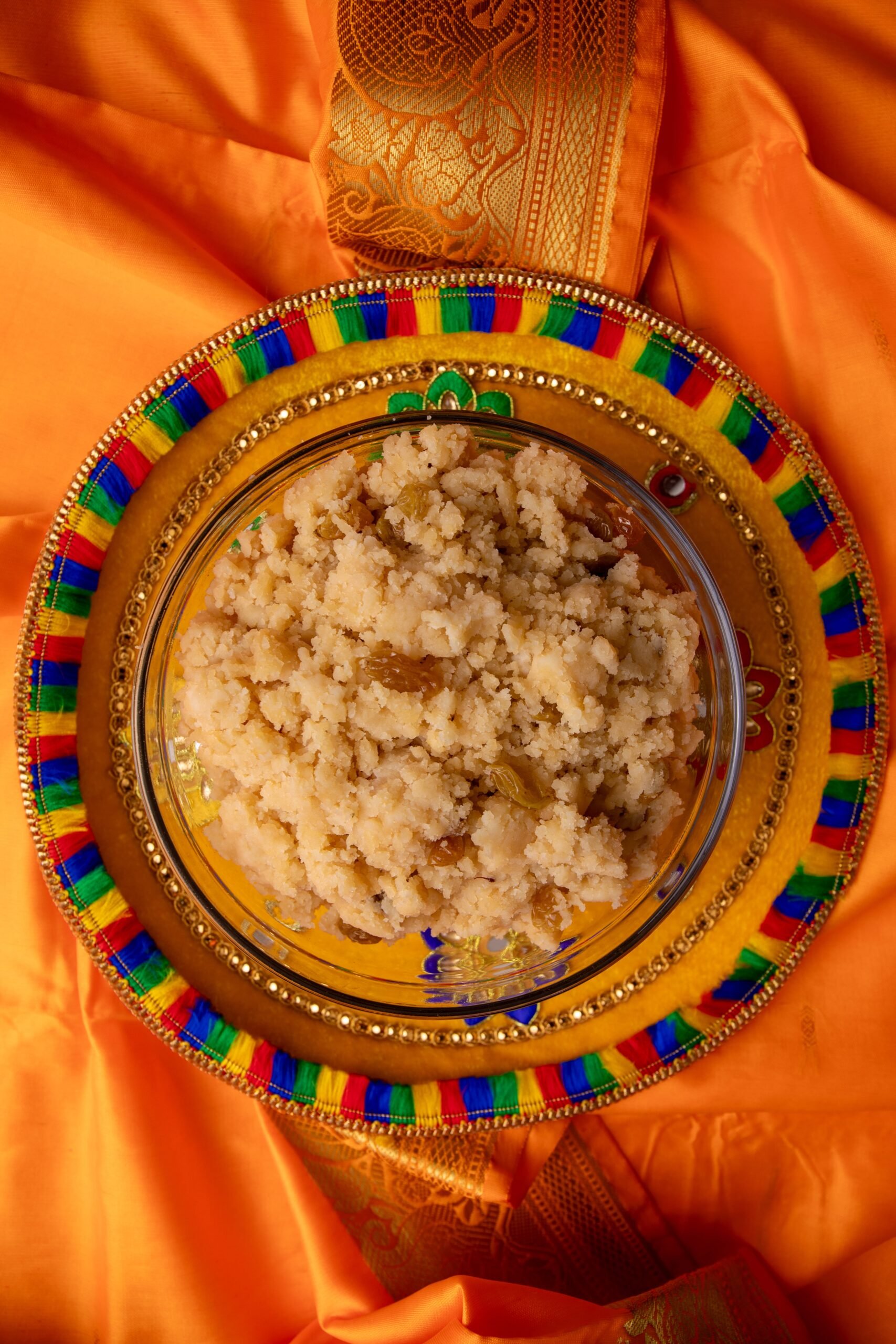
Why You’ll Love This Guyanese Parsad Recipe
- A Labor of Love: This takes some elbow grease in the form of constant stirring but the recipe is incredibly easy to follow.
- Tasty: It’s made with toasted flour, spiced milk, and raisins for sweetness.
- Great for Gatherings: Parsad is meant to be shared. It’s served at weddings, during holidays (like Diwali), birthdays, and other special occasions.
What is parsad?
For most Guyanese people, parsad is simply a dish of flour cooked in ghee or butter. For most Indians, Prasad is an offering made to a deity or God. It can be any number of sweets or vegetarian dishes. And what I am making here with the flour and ghee is called halwa, more specifically maida (all purpose flour) halwa. Some Hindus in Guyana also call this dish Mohanbhog as it is very similar to Bengali Mohan Bhog.
Ingredients for Guyanese Parsad
This easy parsad recipe is made with flour, milk, sugar, ghee, spices, vanilla extract, raisins.

- All purpose flour: Sifted.
- Whole milk: The liquid base of this recipe.
- Granulated sugar: may also use brown sugar or Demerara sugar
- Ghee: You may also use butter.
- Cinnamon sticks: You can substitute this with 1/2 teaspoon of ground cinnamon.
- Cardamom pods: Added for depth of flavor.
- Vanilla extract: For vanilla flavor.
- Raisins: Rinsed.
See recipe card for quantities.
How to Make Guyanese Parsad
I love good food but don’t like complicated steps so to make my parsad I follow these simple steps.
Start by adding milk, spices, sugar, and raisins to a saucepan and bring it to a boil. When the milk comes up to a boil, reduce the heat to low and let it simmer until ready to use.
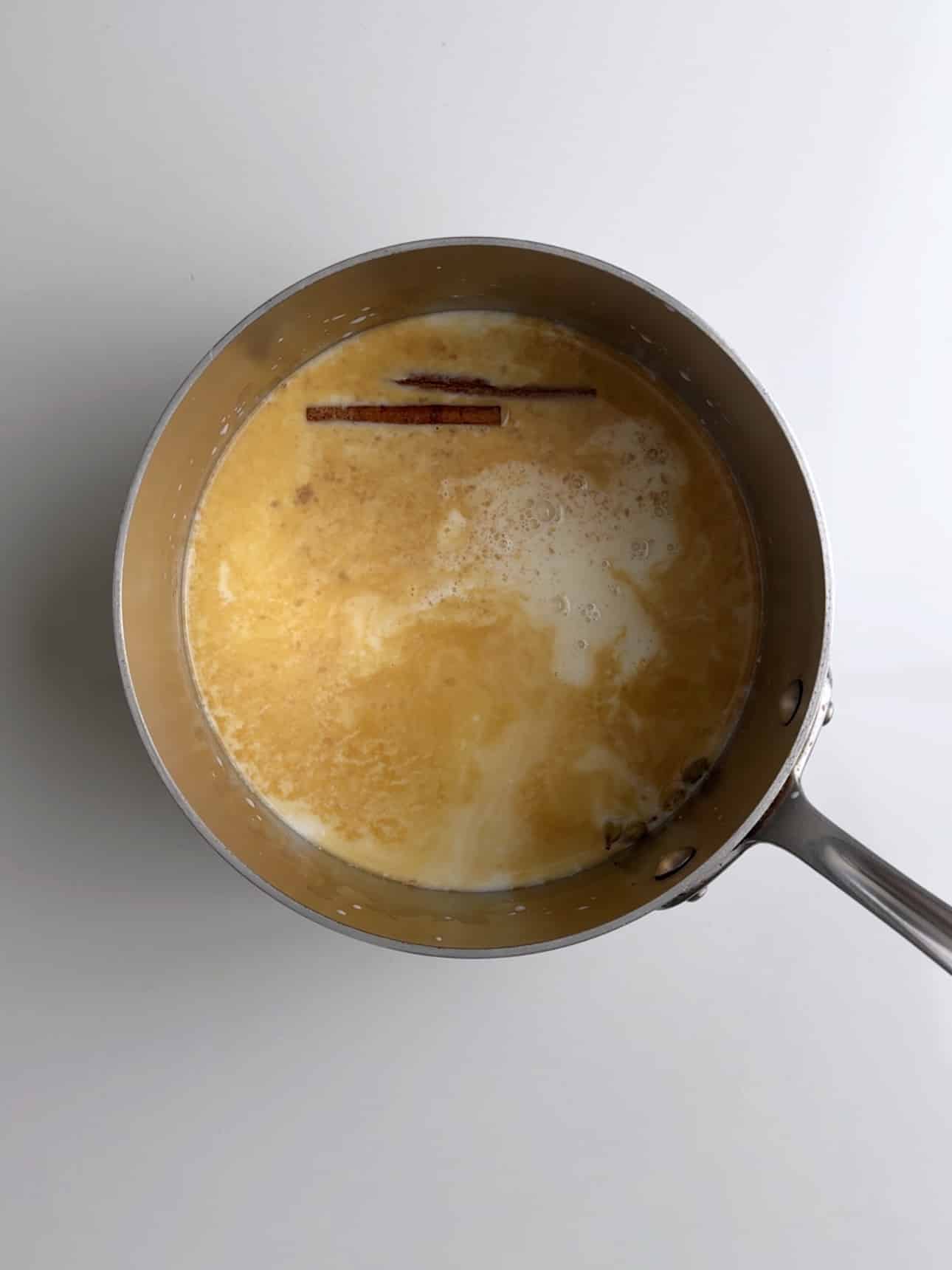
How to Parch Flour for Parsad
Next parch the flour. You can do that two ways. Dry parching, like I do in my Gluten-Free Parsad recipe, or parching in ghee the way I do below. There is no right or wrong way, just a matter of preference.
Add the ghee to a pot on medium heat, then add the ghee. When it is completed melted add the flour and stir to combine. Continue continuously stirring as the flour cooks and become dark in color. This should take about 5-8 minutes. Cook longer for a darker parsad, but be careful not to burn the flour.

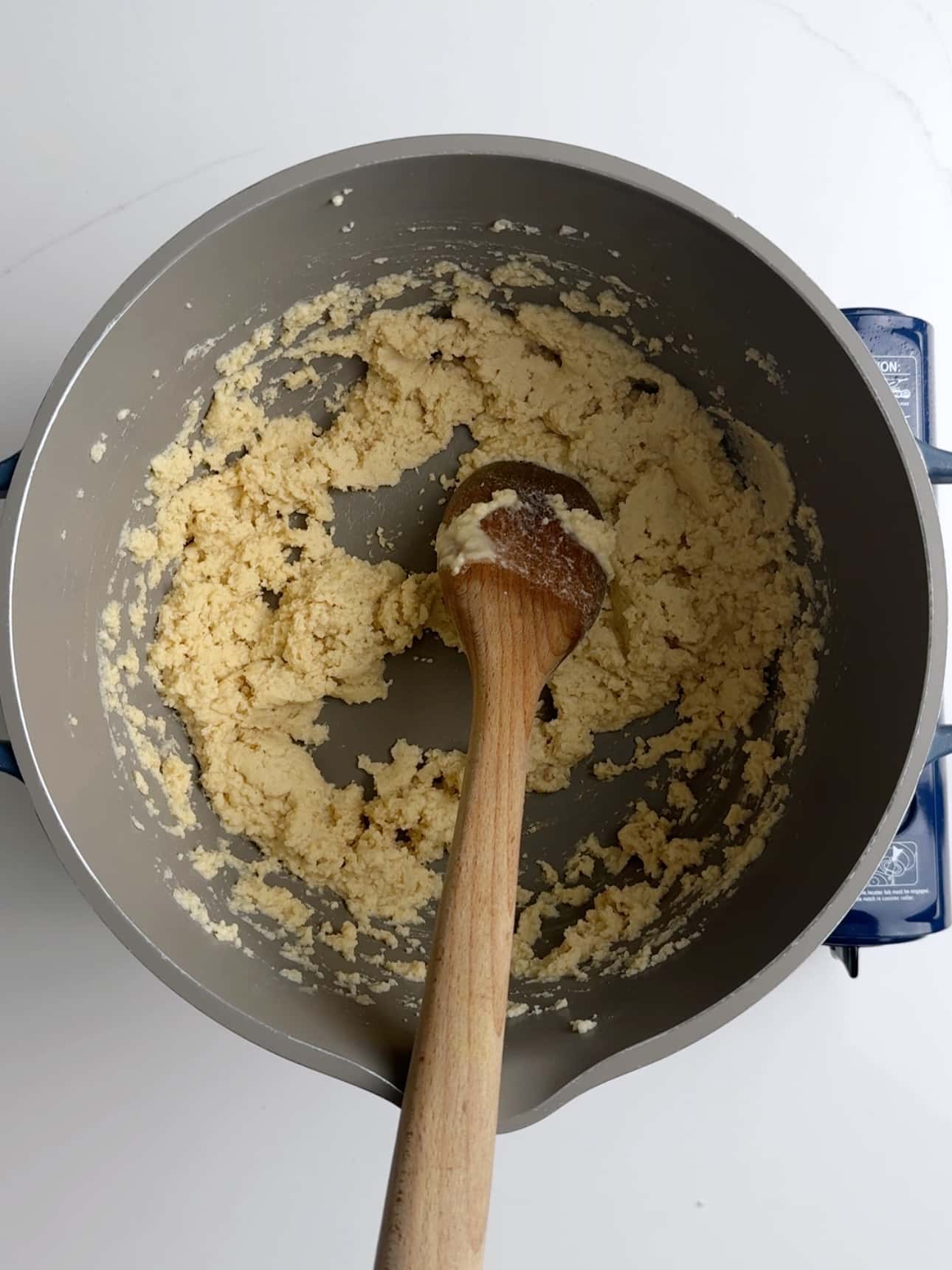
If you want a softer parsad, add a bit more ghee. When combined with the flour it will look a bit more soft and loose as shown below.
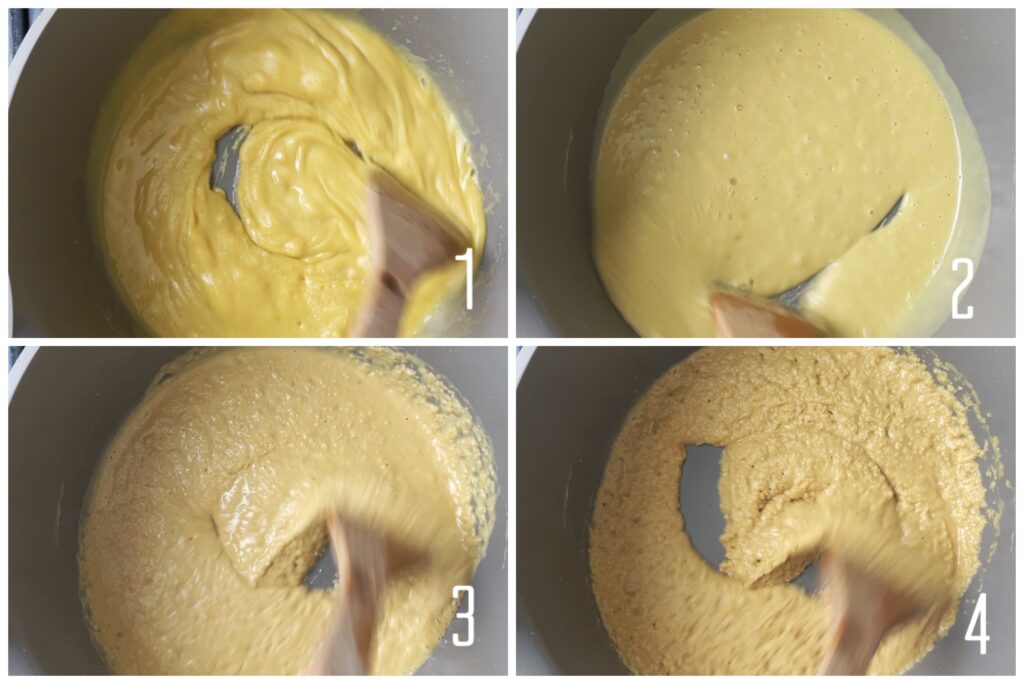
Combine Milk and Flour
Then remove the cinnamon stick and cardamom pods from the milk and discard. Add the hot milk (from earlier) to the parched flour and mix. It is that easy. You can add the milk all at once or a little at a time.
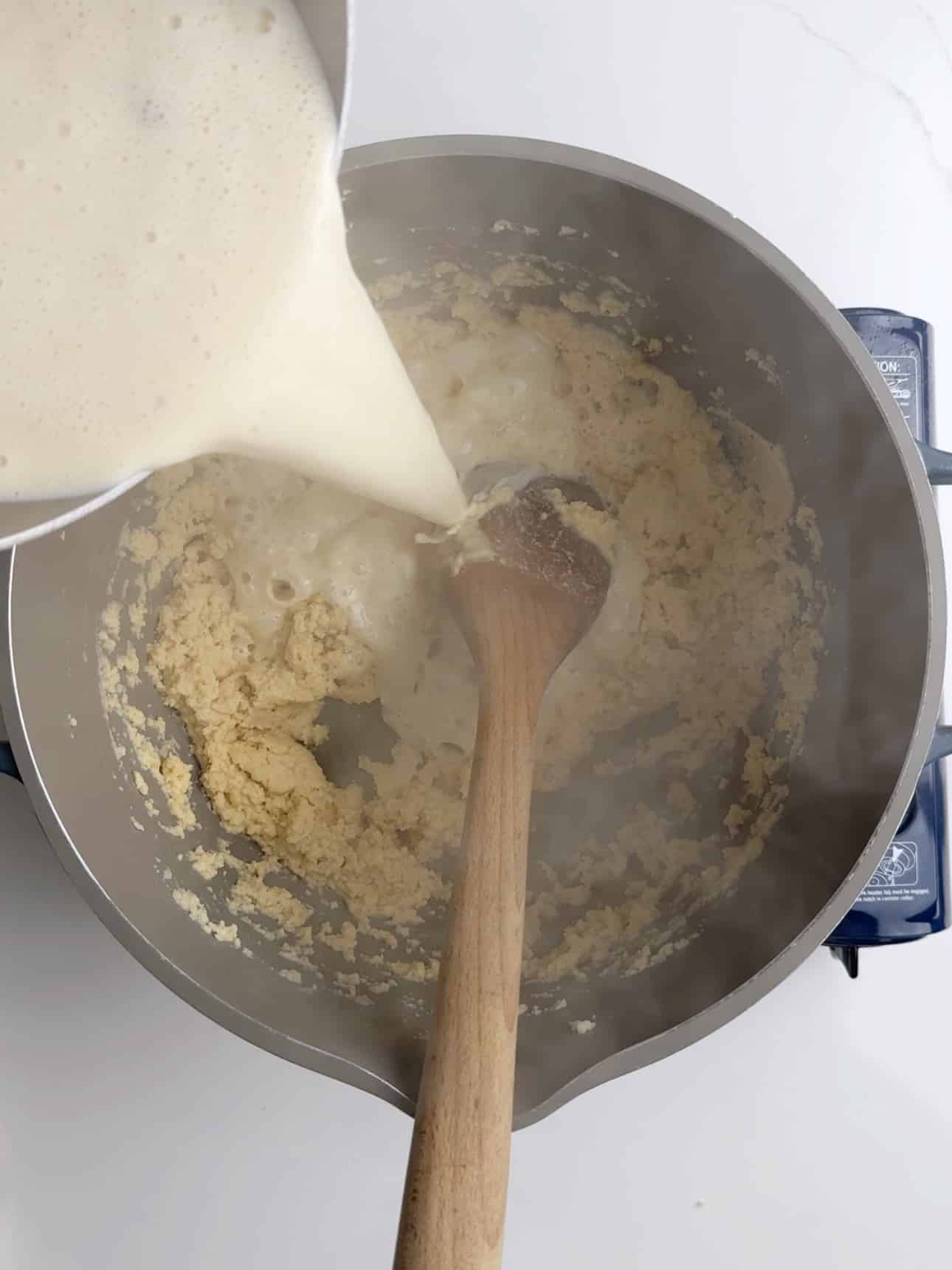
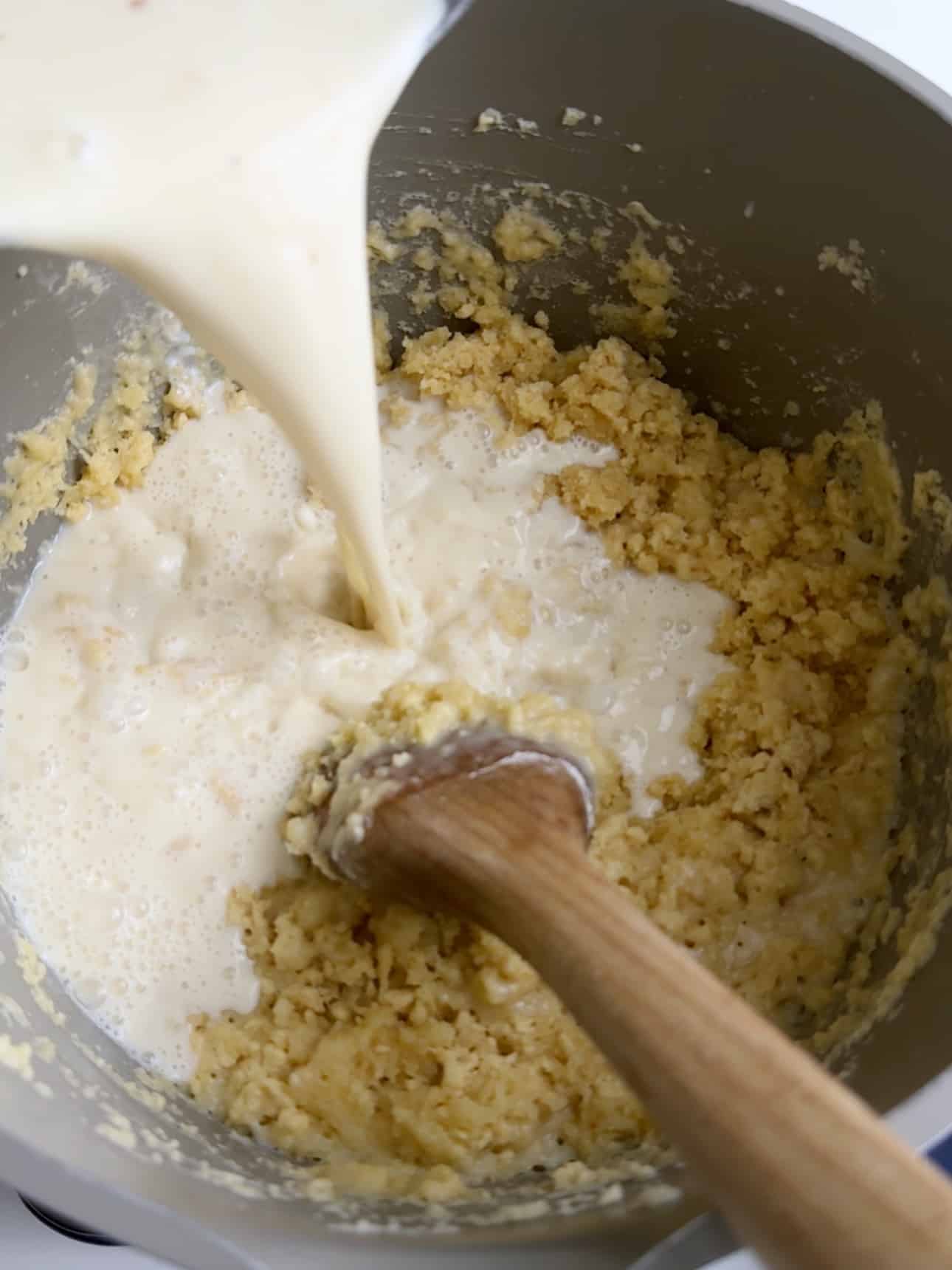
Use the back of the spoon to smooth the parsad as you continue to fold in the milk.
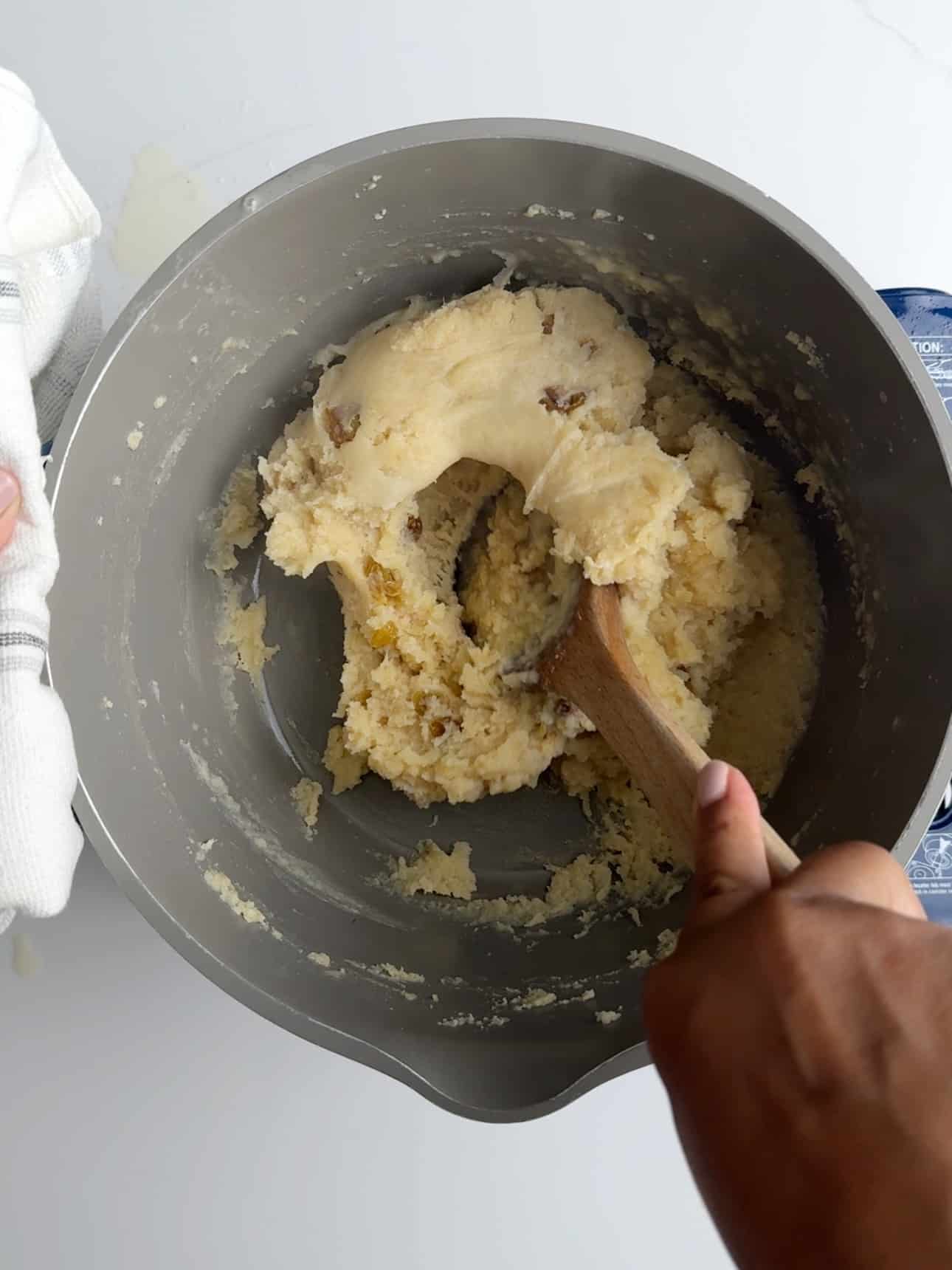
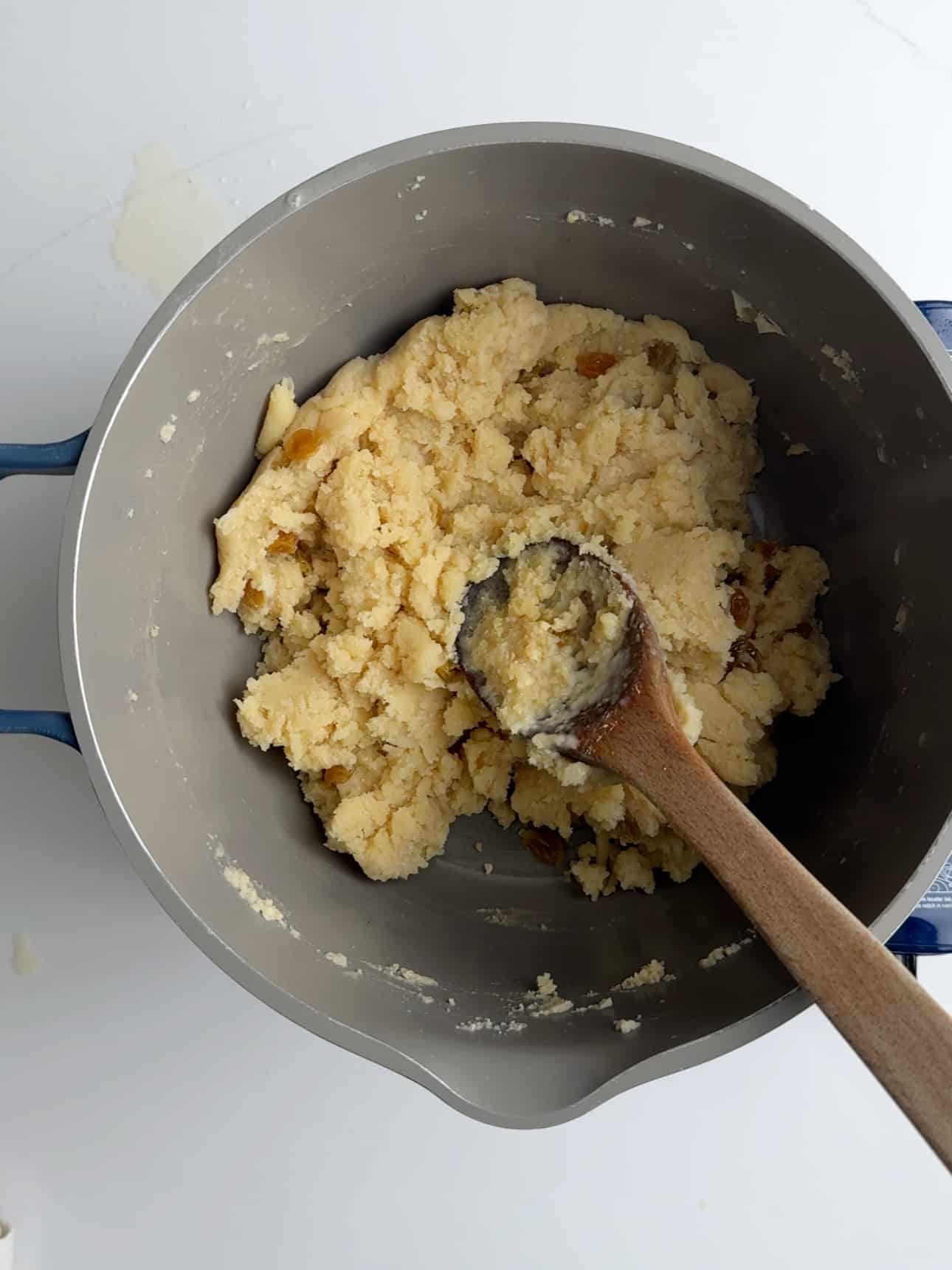
Substitutions & Variations
- More Add-Ins. For more flavor, add maraschino cherries and chopped nuts.
- Browned: If you prefer a darker prasad, parch the flour for longer until you reach your desired color.
- Softer: Some people prefer a smoother parsad. Increase the ghee to one cup for a very soft and smooth parsad. Be warned that it may be oily.
- Sweetness: Instead of milk and sugar, you can use sweetened condensed milk and evaporated milk.
- Gluten Free Parsad: If you have a gluten intolerance, check out my gluten free recipe for parsad.
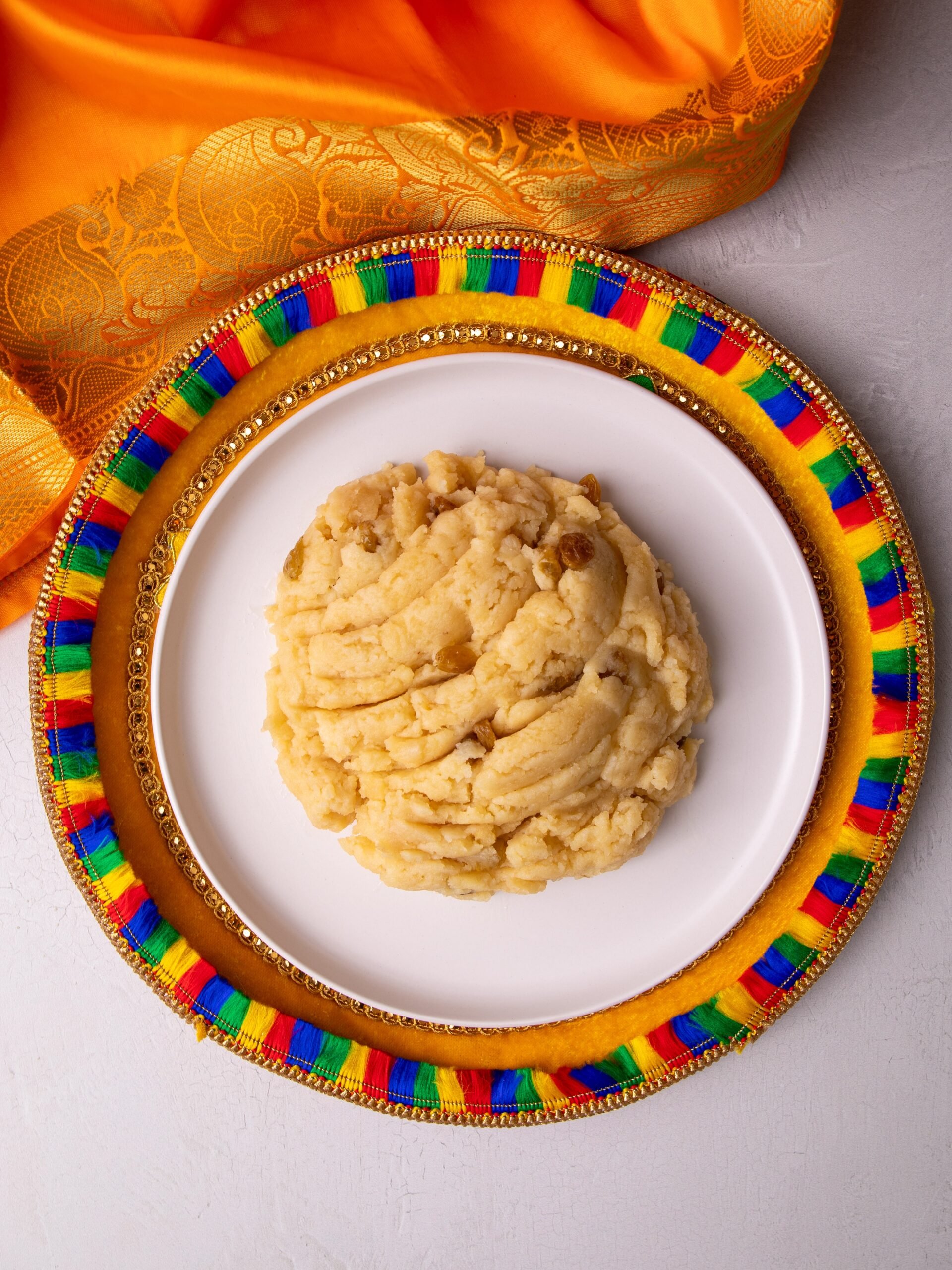
Equipment
- Saucepans: You need a large saucepan to toast the flour and cook the parsad in and a smaller one to cook the spiced milk.
Tips for the Best Guyanese Parsad
- Parch the flour. If you don’t toast the flour, the parsad will be very pale and even worse, may make you sick.
- Don’t walk away from the pot. You need to consistently stir so it doesn’t burn.
- Remember to remove the cinnamon stick and cardamom pods before pouring the milk into the parched flour.
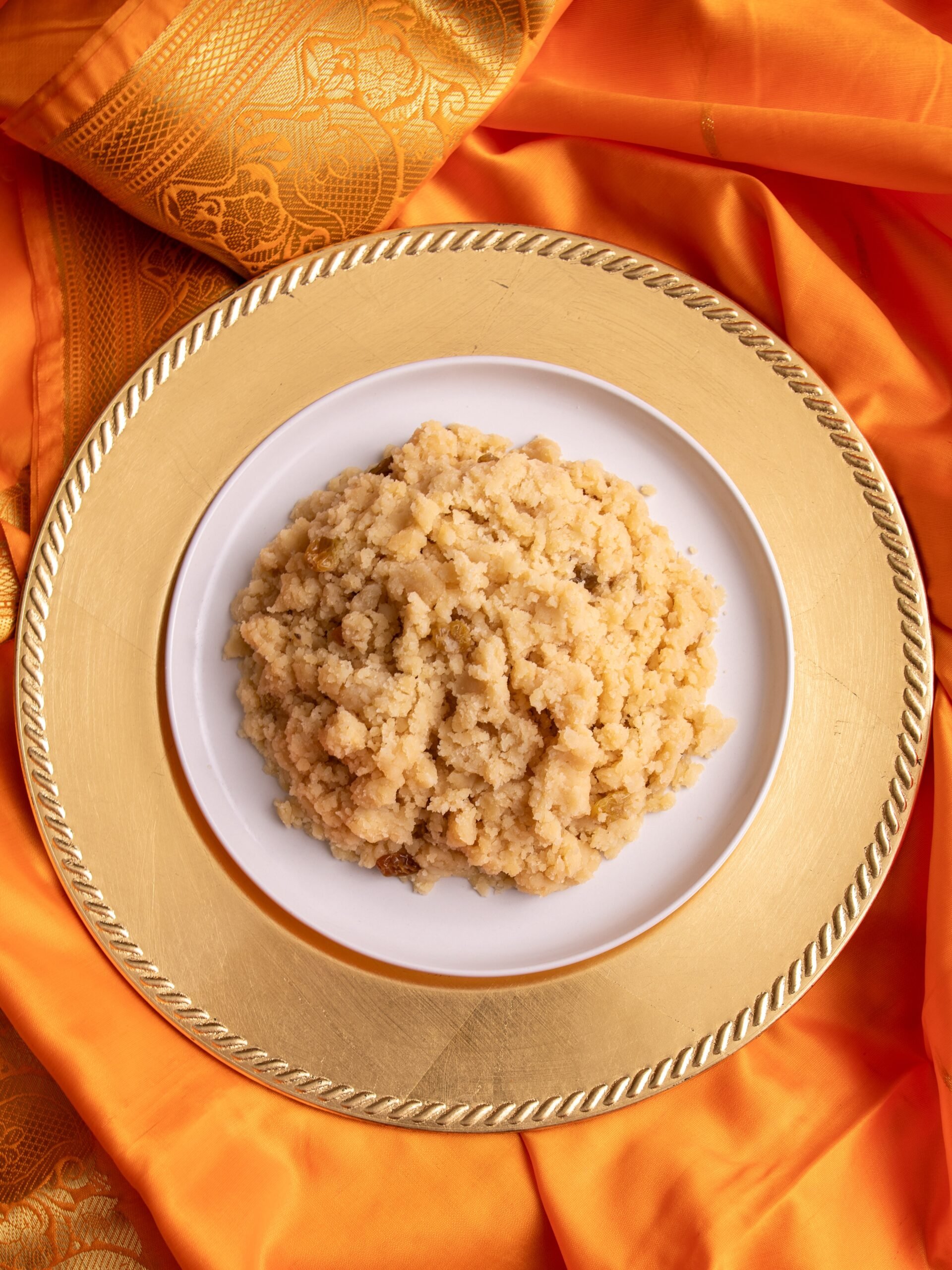
Frequently Asked Questions
It’s sweet with warm spices and a slightly nutty taste. Some describe the consistency of parsad as very similar to fluffy, edible cookie dough. It has a melt-in-your-mouth quality that makes it absolutely irresistible.
Enjoy this piping hot, at room temperature, or cold out of the fridge.

Guyanese Parsad

Equipment
- Small Saucepan
- Large Saucepan
Ingredients
- 3 cups whole milk
- ¾ cup granulated sugar may also use brown sugar or Demerara sugar
- 3/4 cup Ghee may also use butter
- 2 cups All purpose flour sifted
- 2 Cinnamon sticks may substitute for 1/2 teaspoon of ground cinnamon
- 3 Cardamom pods
- 1/2 teaspoon vanilla extract
- ¼ cup golden raisins rinsed
Instructions
- Combine the milk, sugar, cinnamon, cardamom, vanilla extract and raisins in a small sauce pan and bring to a boil on medium heat, then reduce the heat to low once the milk starts to boil and let simmer until ready to use.
- Add a large saucepan to medium-high heat. When it is hot, add the ghee and when the ghee is completely melted, add the sifted flour. Mix to combine and continue to stir while the flour cooks with the ghee.
- Continue to cook the ghee and flour for 5 to 8 minutes, stirring continuously to avoid burning the flour. Cook until the flour is light brown in color and a bit fluffy in texture, then remove from the heat
- Remove the cinnamon sticks and cardamom pods from the milk. Pour the milk, along with all of the raisins, into flour and ghee. You can do this all at once or a little at a time. Then mix until completely combined, using the back of a wooden spoon to smooth the parsad as you mix.
- Allow to cool then serve with some pomegranate seeds or other fruits if you like.
Notes
- Combine milk, sugar, ghee or butter, cardamom, cinnamon, vanilla extract and raisins in a small sauce pan and bring to a boil on medium heat
- While milk mixture is coming to a boil, add a pan to medium heat and bring up to temperature
- When pan is hot add flour and toast/parch (continuously stirring to avoid burning) until flour is light brown in color.
- Then add the milk and raisins mixture to the flour and mix until completely combined
- Next reduce heat to low and continue stirring mixture until thick and smooth
- Remove from heat and allow to cool before serving
Nutrition
The information listed in the recipe card is an estimate provided by an online nutrition tool. The tool evaluates ingredient names and amounts then makes calculations based on the number of servings listed for the recipe. It is provided as a general guideline and not as a precise calculation. For precise nutrition information please feel free to add the ingredients to your preferred nutrition calculator or consult a doctor or licensed nutritionist.
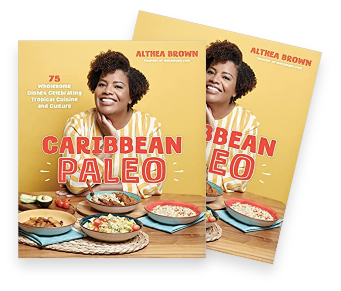

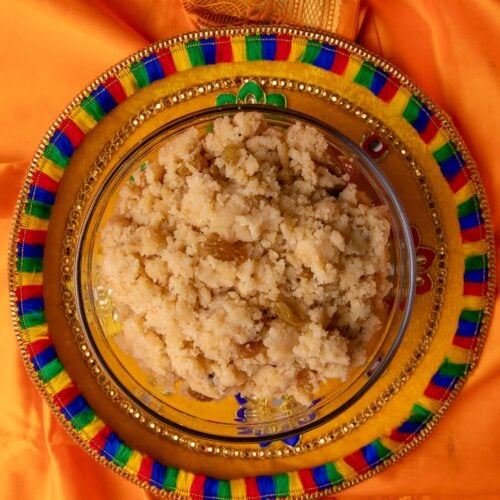
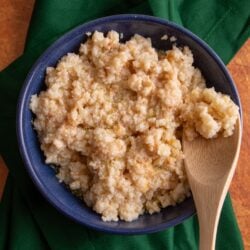 Paynoose
Paynoose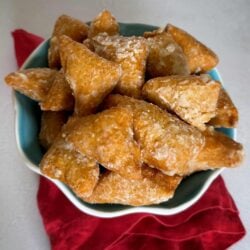 Guyanese Soft Mithai
Guyanese Soft Mithai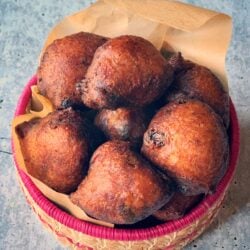 Gluten Free Guyanese Gulgula
Gluten Free Guyanese Gulgula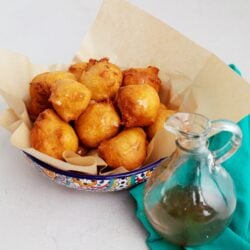 Malasadas (Guyanese Pancakes)
Malasadas (Guyanese Pancakes)
Kavita Says
This was my first time making parsad on my own using a recipe. Usually I’d have aunties telling me what to add and what quantity. This time, I wanted to do it on my own and I was extremely pleased with the results! I added extra ghee as you suggested to attain a softer parsad and it was absolutely perfect. Thanks for sharing this recipe!
Rana Says
I started w a different parsad recipe but it didn’t turn out good (ratios were off and had too much ghee). Then I went to your recipe and it was perfect! I had the best parsad this year!
Kali Says
I found this recipe to be accurate, however, word of caution, be very careful adding very hot milk to parched flour, this can cause flare ups causing serious burn injury.
Althea Brown Says
Thanks for that tip. I usually use a deep pot to help off set any flares or spills.
Britney Says
I love this recipe so much! Question: could the milk be substituted for almond?
Allison Says
I made parsad gluten, sugar and dairy free today for the first time thanks to your recipe (I used stevia instead of coconut sugar) and it was as perfect as it could be! Thanks so much for sharing these gluten free alternatives to our traditional recipes. Happy Phagwah!
Althea Brown Says
Yay. Thank you so much for trying it and sharing. Yummy.
Anna Says
I saw this on Instagram and made within a couple hours because it looked so good! I have never had it before, but I love it! My kids really like it too. Thank you!!
Reena Says
Hi Anna, as Althea mentioned, this sweet is made for pujas. Specifically, it is not a desert. It’s an offering to the gods. It’s special.
Debbie Says
Thank You for sharing ????????
Altee Brown Says
You’re welcome
Susan Bhamdeo Says
Girl, I tried making parsad last week and it came out smooth and silky like sirnie. I don’t like that. I will try your way. This looks easier. Thanks! 🙂
Jenelle Says
I use a sieve to sift the parched flour, pressing any lumps with the back of the spoon, then mix the flour into the milk (without the butter). The butte is then melted in the pot on low heat and the flour/milk mixture is added and turned until it forms the same consistency. With this process, no lumps have to be dealt with during the cooking process, and the buttery flavour is more pronounced!
Karen Says
Great proportions! Thanks! I made it with soy milk instead of whole milk and it was just as good!!
Metemgee Says
Glad it came out great. Thanks for checking my blog out.
Anisia Says
Nice work Althee!!
Metemgee Says
Thanks Girl 😀
Gale Says
Maybe things have changed because I learned like 16 yrs ago. My cousin in law taught me. 1st u parch the flour then sieve it. 2nd melt the butter add the flour while stirring continuously. 3rd add sugar water to mixture (still stirring on fire) 4th add raisins and cherries and milk (optional). Finish lol. But u hv to average the cooking time to make sure its cooked thoroughly.
Metemgee Says
This is how I used to make it. But the butter always made the flour clump up. So then I started putting it in the milk. Other recipes I saw online they add the flour to the pot of boiling milk and let it cook down. When I saw this my main concern was am I cooking this flour long enough? But I’ve made it several times and no one got sick, so…